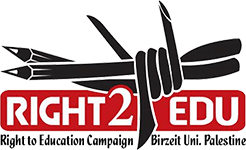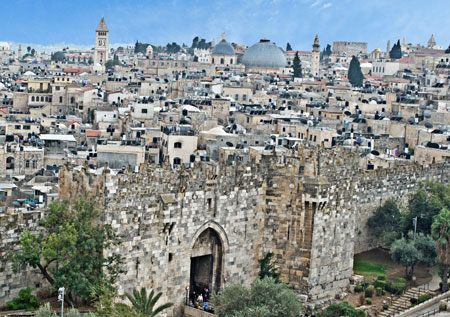Email: right2edu@birzeit.edu | Phone: 0097(0)2-298-2059
Israeli education discrimination against Palestinian East Jerusalem
TEL AVIV, 3 September 2009 (IRIN) – Palestinian East Jerusalem lacks public educational facilities and many classrooms are cramped, according to a new report by Ir Amim, an NGO working in East Jerusalem, and the Association for Civil Rights in Israel (ACRI).
About 94,000 school age Palestinian children live in East Jerusalem, said the report, which was based on municipality records and public and private schools’ enrolment data, and published on 31 August.
East Jerusalem is poor, school drop-out rates are higher than in other parts of the city, and many children do not attend school. Expenditure on education in West Jerusalem is 2-4 times higher than in East Jerusalem, according to the Haaretz newspaper, though the municipality is reportedly seeking to close the gap. Educational attainment in Arab communities is generally much lower than in Jewish communities, according to a report by the Avda Centre, an Israeli NGO.
Nirit Moskovitch, a spokesperson for ACRI, told IRIN: “We argue that every child must have a place in a public classroom… Not only has the municipality failed to provide that, but many of the classrooms are not fit for learning in, are in rented buildings, have tiny stifling classrooms, no yards, and some are an actual health hazard.”
Ahmad Mustafa Sub Laban, a field researcher with Ir Amim, said they had seen many classrooms where 36 students sit in classrooms measuring 12 square metres, in the stifling summer heat.
“There are no yards to play in, and there is no equipment other than a board and desks, nothing to allow these children to enjoy their childhood. In one school we saw a new building but there was no equipment in any of the computer or chemistry labs,” he said.
A Jerusalem Municipality spokesperson said the municipality was in the process of building 248 new classrooms in East Jerusalem and that in 2007-2009 the municipality had built 200 new classrooms and was trying to identify land on which to build more schools.
The Israeli state comptroller’s report of 6 May 2009 says the public education system in East Jerusalem is 1,000 classrooms short, and that the need is growing as more children are born and parents cannot afford private schools.
|
Breakdown of school/students in Palestinian East Jerusalem |
|
| School Type |
Number of Students |
| Public | 40,745 |
| Recognized alternative schools |
20,744 |
| ‘Waqfs’ | 13,500 |
| Private schools – Including UNRWA |
13,955 |
| All registered students |
88,944 |
| Total School age population |
94,464 |
| Children not registered in any school system |
5,520 |
|
Source: lr Amim and ACRI |
|
Enrolment
Some 5,500 Palestinian children in East Jerusalem (just over 5 percent) appear not to be enrolled in either public or private schools. A further 30,000 attend private schools, or schools run by `Waqfs’ (Muslim religious foundations) or the UN agency for Palestinian refugees (UNRWA), according to the report.
According to the Jerusalem Institute for Israel Studies (JIIS), the Arab education system in East Jerusalem has 75,000 enrolled students during the current 2008/2009 school year: 41,000 in the municipal education system, 13,000 in recognized unofficial schools , and an estimated 21,000 students in private schools.
Law breached?
Israel’s compulsory education law requires the state to provide education to all citizens and residents aged 5-16. The law also stipulates that all children over the age of five who have been residing in Israel for over two months are eligible for free education regardless of the legal status of their parents, according to the Ministry of Education.
Despite this, many Palestinian families have little option but to pay some US$500 a year per child for private education, according to Ir Amim and ACRI. This can become a heavy burden where more than one child is involved, observers say.
Palestinians in East Jerusalem are considered residents of Jerusalem but not citizens of Israel. After the 1967 war they were given blue ID cards and permanent residence, but not Israeli citizenship. This means they are entitled to the same education as Israeli citizens, and have basically the same rights, except that they cannot vote in national elections or carry an Israeli passport.
More Articles
2016 Right to Education Tour
Announcing the 2016 Right to Education Tour! Last...




